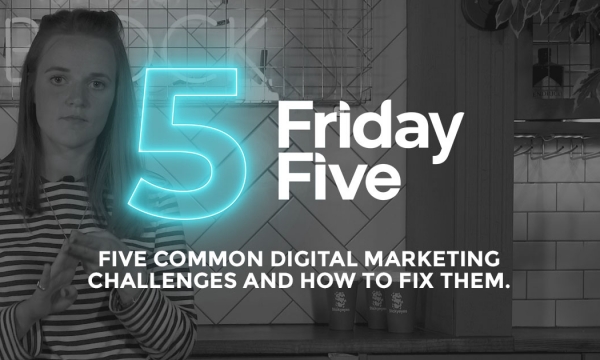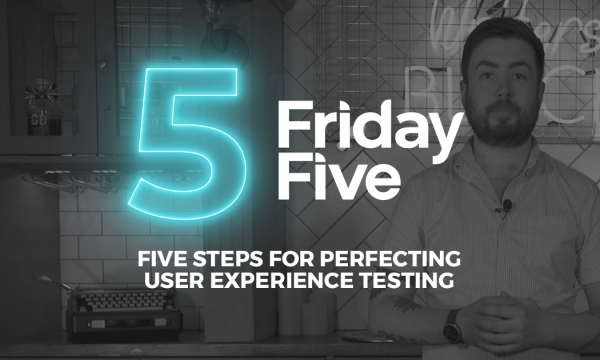Just how do you make sure that your eCRM and marketing automation strategy is delivering the insight, the intelligence and the sales leads that you need?
Stickyeyes’ CRM manager Jasmine Kendal takes you through the five key questions that you need to ask to make sure that your eCRM strategy is delivering the content that your audiences crave, as well as the leads and opportunities that your sales team demand.
Get more from your eCRM and marketing automation approach, keeping your audiences engaged and making it harder for the sales team to complain about your leads.
What will add value to my audience?
There are many ways that you could answer this question, but the answers are right in front of you, in your data.
Your CRM data will highlight the types of content and the topics your audiences and engaging with and responding to, and this will provide an insight into their interests and points.
Their interaction with your brand will tell you a lot about how you can add value to their journey and satisfy those pain points whilst connecting with them on a deeper level.
For example, if a contact or segment of contacts keeps engaging with blog posts around ‘how to create paid social campaigns’, it’s a strong indication that those audiences are either new to paid social or is struggling with getting the most out of their current paid social strategy.
You can take this insight deeper by looking at their behaviours around content both related and unrelated to that subject matter. This insight might reveal what formats and mediums they prefer to consume content in, what particular aspects of a subject might be more relevant to them (for example, are they working in a heavily-regulated sector?) and where they potentially are in the buying or discovery journey (are they consuming content designed to be at the top of the funnel, or further down the funnel?).
The behaviour of your leads and prospects, and the way they engage with your brand, will inform you about what they want to read, so use this insight to use to add value to them.
Read more: Getting it right with B2B and B2C email campaigns.
How do I find the worthwhile leads?

The current and future key to success in identifying the ‘hottest’ leads is predictive lead scoring.
A number of CRM and marketing automation platforms, including Hubspot, have been developing how their systems can use machine learning to ‘predict’ how likely a lead is to convert. This is helping sales and marketing teams to focus their efforts on the most valuable leads, prospects and opportunities.
Lead scores are calculated based on a lead’s behaviour and engagement across all of your relevant channels, and this process means that you can get a much more objective indicator of which leads are hot, and which leads are not.
Not only does that provide a focus for your sales team on who to call first, it also gives them great intelligence on what that lead is looking for. Finally – an end to that argument from the sales team that the leads aren’t good enough!
Read more: Three key stages of successful marketing automation.
How do I get more targeted and personal?

People are crying out for more personalised content and marketing that is more relevant but at the same time, they’re getting more careful with their data than ever before – and they’re more wary of marketing that comes across as intrusive and creepy. So how do you get around this?
Again, we’re back to the data and your lead scoring. This can provide a huge amount of insight on your leads as individuals, and the help they are crying out for based on what they are engaging with.
You need to use your data to understand the type of content like, in what format and how they want to receive it.
Unfortunately, it’s not as simple as ‘Hi First Name’ anymore.
Providing leads the content that you know will help them solve a problem they are facing is the perfect way to nurture your relationship with them. You become the brand that they can trust to provide the content they need, but you aren’t the brand that creepily follows their every move and click. That connection goes a long way once your sales team make their first touchpoint.
It’s amazing how simple and effect it is when you take the time to fully understand those contacts behind the numbers.
Read more: Email isn’t dead, but the expectations of audiences means we need to rethink our relationship with data.
How do I find time to do the clever stuff?

I can imagine you’re currently asking yourself ‘Where am I supposed to find time to do all of this?’. This is where those very clever CRM systems you spend every day on come into play.
You should be spending your time understanding the humans behind the data whilst letting your CRM system nurture your leads automatically through workflows. These automated workflows can be triggered based upon your audience’s behaviour and interactions via your channels.
For example, a download of a whitepaper on the latest Google Update should automatically enrol that contact into an automated workflow that triggers timed follow up emails with up to date content relevant to the latest Google Update.
This is then satisfying the lead’s need and forming those all-important touchpoints without you having to consciously be in control of that distribution. That leaves your time free to keep on track of understanding your leads all important needs.
Read more: Why marketers have nothing to fear from the rise of marketing automation.
How do I know it’s working?

To answer this question, you need to question everything, test everything and measure everything.
Is the data proving or disproving your hypothesis? Is what you believe is happening, actually happening?
Don’t immediately go with the answer you want to be right, go with the answer the data and your testing is telling you is right. It’s not a bad thing if your hypothesis is proven wrong during testing, it means digital behaviour may have changed and you’ve now got the intel to capitalise on it.
Don’t forget to keep an eye on your measurement metrics as well, you want to be able to show those all important ‘before’ and ‘after’ stats.
Read more: How to set killer KPIs for your digital content strategy.


